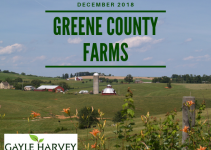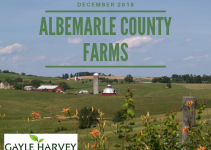A report from the United States Department of Agriculture states that farms of all sizes spend more on indirect energy inputs like fertilizer and pesticides than on direct energy inputs such as fuel and electricity. Data from the Agricultural Resource Management Survey shows that 17.1% of operator expenses are put toward indirect energy, compared to the 8.5% for indirect energy.
Small farms have the highest share of direct energy expenditures, medium farms have the highest share of indirect energy expenditures, and large farms spend less overall on energy. Larger farms spend more overall money on both of course, but they have lower shares of their total resources devoted to energy presumably because they require fairly high labor costs to run and maintain. As you can tell by the figure above, fertilizer tends to be the form of energy input that farms spend the most on. In the U.S., farmers usually use inorganic fertilizer. It provides macronutrients to the soil in the form of compounds. Far and away the most common macronutrients are nitrogen (N¬), phosphorous (P), and potassium (K). Multinutrient fertilizers that have two or more nutrient compounds are generally the most common. Usually you get NP or NPK fertilizers (nitrogen and phosphorous or nitrogen, phosphorous and potassium respectively). Making nitrogen fertilizer is pretty energy-intensive. It involves a method called the Haber-Bosch process that uses a lot of natural gas, converting atmospheric nitrogen (N2) to ammonia (NH3) through a hydrogen reaction.
Clean Power Plan
As recently as August 3 of this year, president Barack Obama unveiled the final version of the Clean Power Plan. The plan, ambitious in its scope, aims to cut CO2 emissions by almost a third by the year 2030. He put the effect of the reduction in quantifiable terms by saying the projected reduction of carbon emissions would be similar to taking 166 million cars off the road. Every state will be tasked with a certain standard for emission-reduction, and they’ll all need to submit plans with ideas as to how to meet them. States can reduce emissions through any means, and must submit proposals to the federal government by 2015, lest the EPA devise one for them. The plan is aimed specifically at coal-burning power plants. It’s the latest attempt by the federal government to try and shift the country’s emphasis from coal to alternative forms of energy such as solar and wind power, as well as natural gas. Predictably there are many opponents to this bill in the energy industry, especially in places like West Virginia, Kentucky, and Wyoming where the coal industry is a vital part of economic configuration. Needless to say, it wouldn’t be a surprise if some of these states refused to comply with the EPA’s request for carbon-reduction proposals. Some might say that a federal mandate will be more effective at reducing U.S. reliance on coal. Certainly if you’re a legislator at any level in one of the aforementioned coal-heavy states, chances are a large part of your constituency is employed or in some way related to the coal mining industry. It’s such an entrenched part of life in certain areas that even if you wanted to begin addressing it, you’d have to think about the short-term effects it would have on your political career and chances of reelection. But what does this mean for you if you own rural land in the Greater Charlottesville area?
Effects of climate change and the Clean Power Plan on the agricultural sector
The Clean Power Plan will probably increase energy expenditures, both direct and indirect. The price of commercial electricity tends to increase rather modestly. On U.S. farms, the rate of electricity use remains fairly consistent. If you own farmland in central Virginia you probably already know this, but a lot of the power bill goes to the heating and cooling costs inherent in livestock production. There’s also the use of irrigation systems and sometimes other procedures involving water pumping. Then you’ve got security, which often comes in the form of an electric fence. Then in some cases you have to think about refrigeration and feeders/sprays. For livestock, poultry has the highest share of electricity spending while hogs have the highest average. For crops, cotton and rice farmers tend to have the highest share of electric spending.
An increasing amount of United States electricity comes from natural gas. It’s certainly used more than it was a few years ago and that usage is projected to increase. In 2004, coal was responsible for generating 50% of the country’s electric power, with natural gas at 18%. As of 2013, coal is down to 39% and natural gas is up to 27%. With measures like the Clean Power Plan and a general growing awareness of climate change and its adverse affects, natural gas is sure to play a bigger role. If you’re looking at it from an agricultural lens, consider that the use of natural gas makes up about 80% of fertilizer production costs, especially when we’re talking about nitrogen fertilizers. It’s worth noting that 50% of the United States supply of nitrogen fertilizer was imported in 2011, most of it from Canada and Trinidad and Tobago. Still, if you consider the ripple effect that the Clean Party Plan is expected to have, the costs of natural gas may go up in a considerable amount of places. Some good news for those of you reading this on your Madison County farms is that the Southern Seaboard has a relatively low share of fertilizer expenditures (though we do spend the most on electricity). Plants who use natural gas to generate electricity will in the coming years have to ramp up their supply considerably in order to meet EPA standards. This means the price of natural gas will rise. The EPA definitely projects that the Clean Power Plan will increase commercial energy prices.
So what does this mean for you and your farmland in the Greater Charlottesville area? American farmers are notoriously good at adapting to outside conditions, be they economic or otherwise. Many farmers will probably respond to this either by taking on more energy-efficient practices or scaling back production. Admittedly, climate change takes its toll on agriculture. Climate disruptions to agriculture have increased in the past 40 years. Heat stress in livestock can increase susceptibility to diseases, reduce or impair fertility, and decrease milk production. Temperature changes may also increase the prevalence of parasites and diseases that affect your livestock. An earlier onset of spring could allow some pathogens to live longer. In rainfall-heavy places, moisture-reliant pathogens could start to thrive. There are also obvious considerations when it comes to heat and food storage and transportation.
Fortunately, the agricultural industry is resilient and malleable, and farmers aren’t shying away from alternative energy measures. Consider that the number of on-farm operations intended to produce on-farm renewable energy doubled between 2008 and 2011…guess the times they are-a-changin’. Farmers are looking towards sources of alternative energy that they can rely on themselves to produce: resources like solar panels, wind turbines, and methane digesters. There are also different farming techniques that could save money/energy in the long run. For example, precision agriculture. According to the Natural Resources Conservation Service, if GPS were used on just 10% of planted acres, it would save 16 million gallons of fuel through increased efficiency. Auto-steering (equipment guiding), field mapping…these are worthwhile endeavors.
Solar power—in the form of photovoltaic cells—is another viable alternative to coal and natural gas. Especially considering that the use of energy on farms is typically motor-generated, this could and already has been a benefit to farmers. You can use it to power water-pumping systems for both irrigation and livestock. It could power those systems whether they were above or below ground. Especially in places with no power lines, it’s a definite way to generate and use electricity and it also happens to be environmentally stable.


